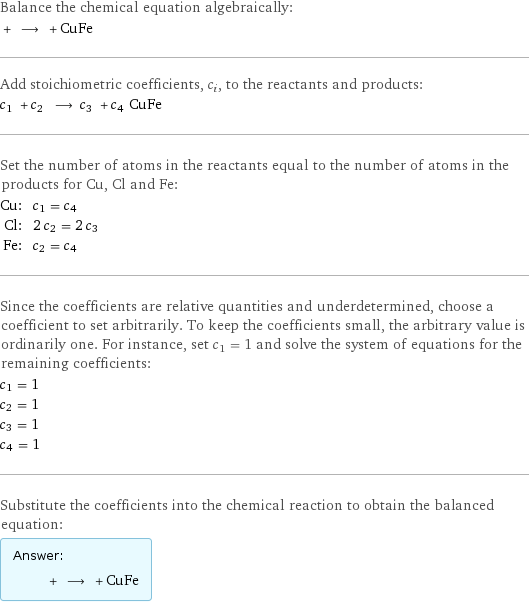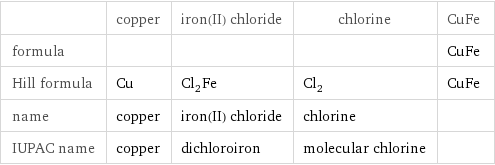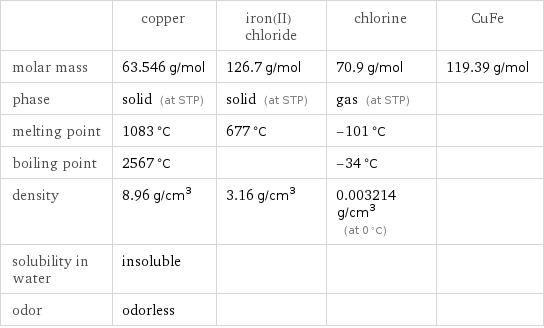Input interpretation

copper + iron(II) chloride ⟶ chlorine + CuFe
Balanced equation

Balance the chemical equation algebraically: + ⟶ + CuFe Add stoichiometric coefficients, c_i, to the reactants and products: c_1 + c_2 ⟶ c_3 + c_4 CuFe Set the number of atoms in the reactants equal to the number of atoms in the products for Cu, Cl and Fe: Cu: | c_1 = c_4 Cl: | 2 c_2 = 2 c_3 Fe: | c_2 = c_4 Since the coefficients are relative quantities and underdetermined, choose a coefficient to set arbitrarily. To keep the coefficients small, the arbitrary value is ordinarily one. For instance, set c_1 = 1 and solve the system of equations for the remaining coefficients: c_1 = 1 c_2 = 1 c_3 = 1 c_4 = 1 Substitute the coefficients into the chemical reaction to obtain the balanced equation: Answer: | | + ⟶ + CuFe
Structures

+ ⟶ + CuFe
Names

copper + iron(II) chloride ⟶ chlorine + CuFe
Chemical names and formulas

| copper | iron(II) chloride | chlorine | CuFe formula | | | | CuFe Hill formula | Cu | Cl_2Fe | Cl_2 | CuFe name | copper | iron(II) chloride | chlorine | IUPAC name | copper | dichloroiron | molecular chlorine |
Substance properties

| copper | iron(II) chloride | chlorine | CuFe molar mass | 63.546 g/mol | 126.7 g/mol | 70.9 g/mol | 119.39 g/mol phase | solid (at STP) | solid (at STP) | gas (at STP) | melting point | 1083 °C | 677 °C | -101 °C | boiling point | 2567 °C | | -34 °C | density | 8.96 g/cm^3 | 3.16 g/cm^3 | 0.003214 g/cm^3 (at 0 °C) | solubility in water | insoluble | | | odor | odorless | | |
Units
